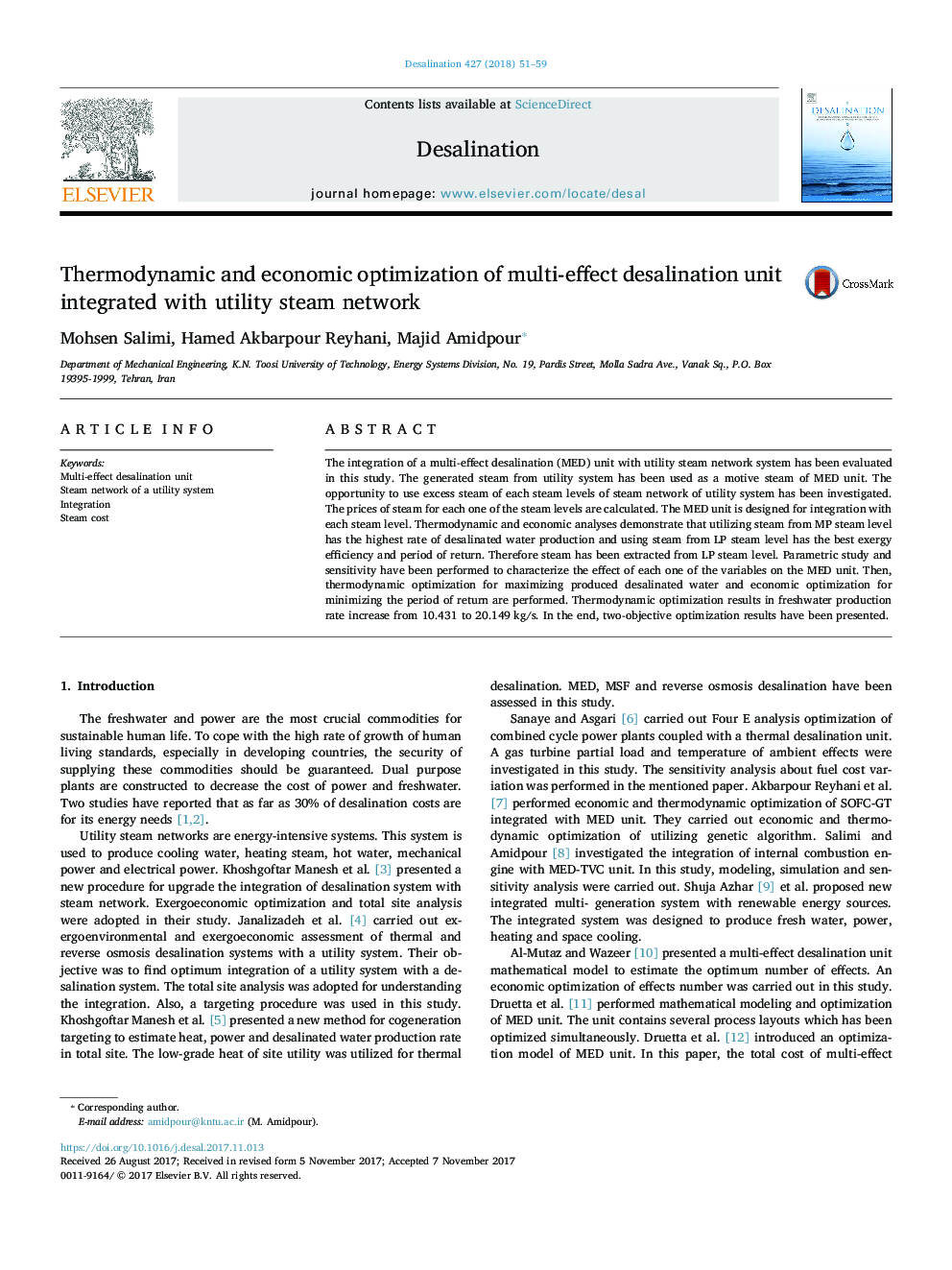| Article ID | Journal | Published Year | Pages | File Type |
|---|---|---|---|---|
| 7008118 | Desalination | 2018 | 9 Pages |
Abstract
The integration of a multi-effect desalination (MED) unit with utility steam network system has been evaluated in this study. The generated steam from utility system has been used as a motive steam of MED unit. The opportunity to use excess steam of each steam levels of steam network of utility system has been investigated. The prices of steam for each one of the steam levels are calculated. The MED unit is designed for integration with each steam level. Thermodynamic and economic analyses demonstrate that utilizing steam from MP steam level has the highest rate of desalinated water production and using steam from LP steam level has the best exergy efficiency and period of return. Therefore steam has been extracted from LP steam level. Parametric study and sensitivity have been performed to characterize the effect of each one of the variables on the MED unit. Then, thermodynamic optimization for maximizing produced desalinated water and economic optimization for minimizing the period of return are performed. Thermodynamic optimization results in freshwater production rate increase from 10.431 to 20.149Â kg/s. In the end, two-objective optimization results have been presented.
Keywords
Related Topics
Physical Sciences and Engineering
Chemical Engineering
Filtration and Separation
Authors
Mohsen Salimi, Hamed Akbarpour Reyhani, Majid Amidpour,
